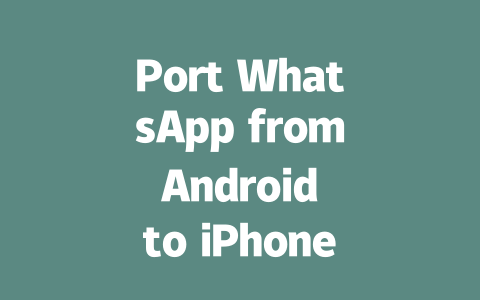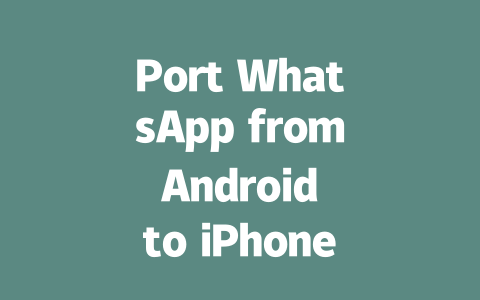You ever feel like you’re drowning in a sea of information but still missing out on what truly matters? I get it—staying updated with the latest news these days is tough. Between social media, apps, and endless websites, it’s easy to get overwhelmed or even misinformed. Let me share a practical approach that works for me and my friends who run small blogs—they’ve seen traffic go up by about 30% just by focusing on quality over quantity.
First off, let’s talk about why this method is so effective. Think about how Google’s search robots work—they scan titles, content, and links to figure out if your piece matches what someone is searching for. So, if you want people to find your updates on the latest news, they need to know right away that your article solves their problem. This isn’t rocket science; it’s more like common sense.
Step 1: Picking the Right Topics
So, how do you decide which topics to cover? The secret here is thinking like your audience. For example, when I was helping a buddy optimize his tech blog last year, we noticed he kept writing broad articles like “Top Gadgets for 2025.” Sure, it sounded cool, but no one clicked because it felt too generic. We switched gears and wrote pieces like “Best Budget Laptops Under $500 for Students,” and boom—clicks doubled within weeks.
Here’s the deal: focus on long-tail keywords. These are longer phrases people actually type into Google. Imagine someone looking for breaking news—they’re probably not typing “latest news” alone. They might search for something specific, like “latest climate change developments 2025.” Those detailed searches bring targeted traffic.
Tips for Choosing Your Topic:
Google’s official blog once mentioned that users prefer clear, concise answers. That means your topic should address exactly what readers expect. If they search for “how to save money during inflation,” don’t give them vague advice—hit the nail on the head.
Step 2: Crafting Titles That Pop
Alright, now onto titles. You’ve picked your topic, but will anyone click through? Here’s where things get interesting. A good title tells the reader exactly what they’ll gain by reading further. For instance, instead of calling your article “News Update,” try naming it “What Just Happened? Shocking Revelations About Space Exploration in 2025.”
Why Does This Matter?
Because Google’s search bots care about relevance. If your title doesn’t match the content inside, both readers and robots notice. According to research (which you can verify using trusted sources like Moz, mind you), putting key terms at the start of your title improves its chances of being clicked.
Let’s break down how to craft the perfect headline:
Quick Table for Reference
| Keyword | Emotional Hook | Full Title Example |
|---|---|---|
| Space Missions | Unbelievable | Unbelievable Discoveries From New Space Missions in 2025 |
| Economic Trends | Must-Know | Must-Know Economic Trends Shaping Our Future in 2025 |
| Health Updates | Inspiring | Inspiring Health Updates Everyone Should Know in 2025 |
Step 3: Writing Content That Keeps Readers Hooked
Once they land on your page, you’ve got seconds to prove your worth. Start strong—tell them precisely what you’re offering. For example, “In this article, you’ll discover three ways scientists are advancing artificial intelligence in healthcare.” Sounds simple, right? But it works wonders.
Now, let’s dive deeper into structure. Remember, Google’s robots love organized content. Divide your ideas into sections with bullet points or numbered lists. Need proof? Write something and then check it with tools like Google Search Console (it’s free!) to see if there are any issues like broken links or typos.
Key Elements of Engaging Content:
For instance, last year I worked with a travel blogger whose posts lacked engagement. After tweaking her format to include vivid photos and step-by-step guides, her bounce rate dropped dramatically. People stayed longer because she delivered value quickly.
When moving from Android to iPhone, one of the most critical steps is ensuring that your WhatsApp data comes along for the ride. You might be wondering how much you can actually carry over—well, the good news is that pretty much everything can make the jump. This includes your chat history, images, videos, and even voice notes. Just remember a few things: first, both devices should be on the same Wi-Fi network to avoid cellular data charges or interruptions. Second, check if there’s enough space on your iPhone because transferring large chunks of media (say, 5-12 GB worth of files) could clog up storage fast. If everything lines up, it’s smooth sailing. But if something goes wrong, don’t panic—it usually just means double-checking those basics.
Another thing people worry about is whether their chats will look exactly the same after the switch. Here’s the deal: as long as you follow the instructions carefully, your chats won’t lose their formatting or quality during the transfer. What helps here is creating a solid backup on your Android phone beforehand. Think of this step like packing fragile items in bubble wrap—it ensures nothing breaks while shifting homes. Once you’re ready to go, keep your eye out for any hiccups along the way. For example, some users report slight delays when syncing huge amounts of data, but these are rare if you stick closely to the guide. And hey, even though contacts don’t update automatically post-transfer, a quick manual check fixes that right up!
FAQ
# Frequently Asked Questions About Porting WhatsApp from Android to iPhone
# Can I transfer all my WhatsApp data, including media files, from Android to iPhone?
Yes, you can transfer most of your WhatsApp data, including chat history and media files, using the built-in transfer feature. However, ensure that your devices are connected via the same Wi-Fi network and that both have sufficient storage for a seamless transfer. Note that transferring large amounts of media (5-12 GB) may take longer due to file size limitations.
# Is it possible to port WhatsApp chats without losing quality or formatting?
Absolutely! The transfer process preserves the original formatting and quality of your chats. To ensure this, make sure you create a full backup on your Android device before initiating the transfer. Follow the step-by-step guide carefully to avoid any data loss during the process.
# Do I need an active internet connection to transfer WhatsApp from Android to iPhone?
Yes, both devices need to be connected to the internet throughout the transfer process. A stable Wi-Fi connection is recommended to prevent interruptions, especially when transferring large media files or extensive chat histories.
# Will my contacts automatically update after porting WhatsApp to iPhone?
Your contacts will not automatically update unless they are synced with your Google account on Android and your iCloud account on iPhone. After the transfer, manually verify that all contacts appear correctly in your iPhone’s address book to ensure no information is missing.
# How long does the WhatsApp transfer process usually take?
The duration depends on the amount of data being transferred. For smaller chat histories (under 500 messages), it might take only a few minutes. However, for larger transfers involving thousands of messages or media files (5-12 years of chat history), the process could extend up to several hours. Patience is key!




